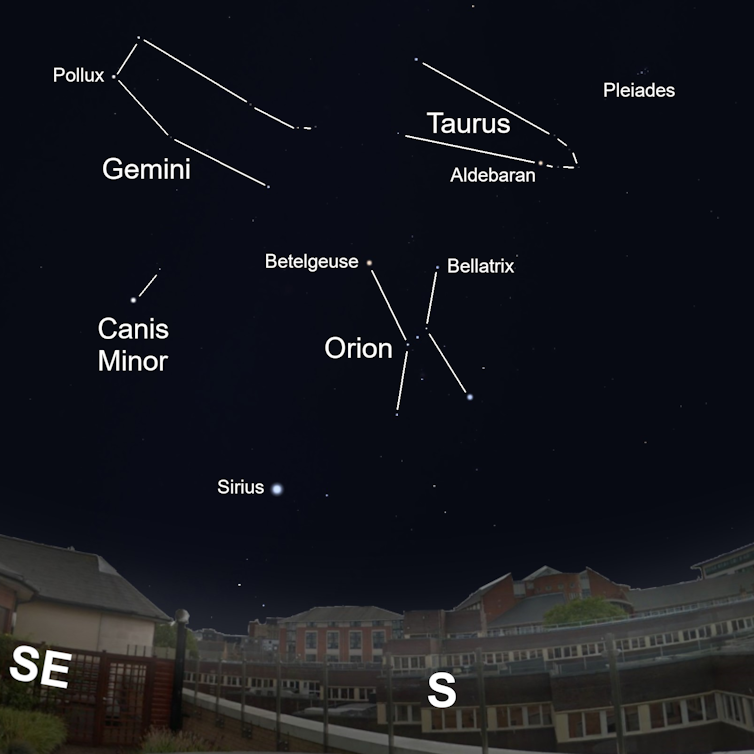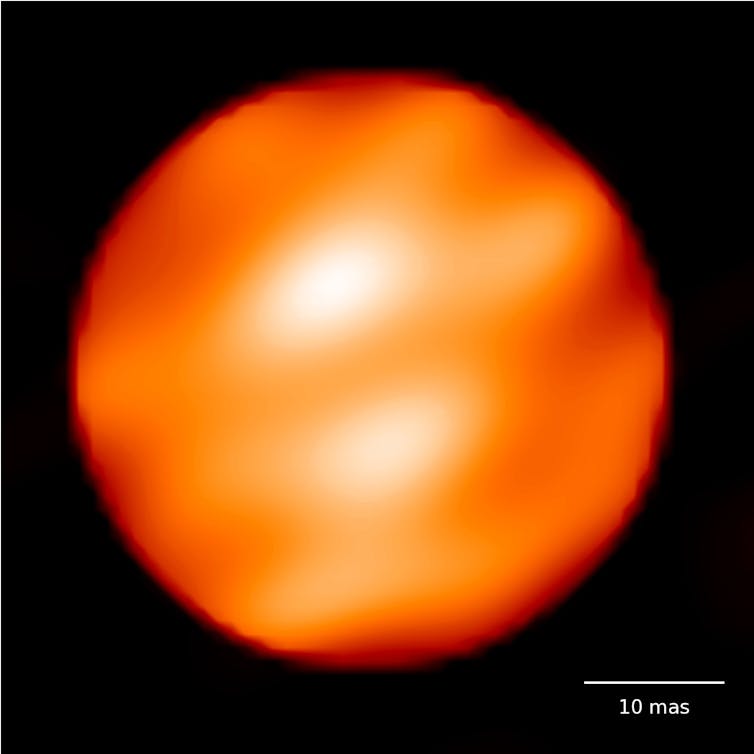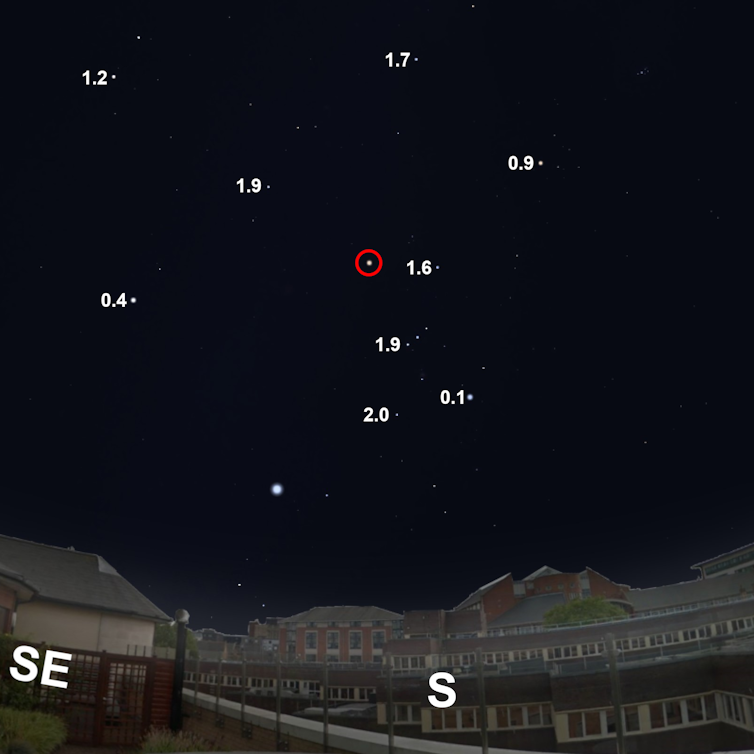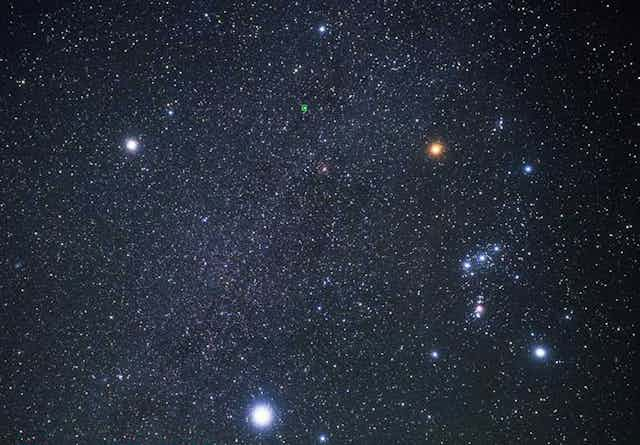Every season has its characteristic star constellations in the night sky. Orion – one of the most recognisable – is distinctly visible on crisp, clear winter nights in the northern hemisphere. The constellation is easy to spot even in light-polluted cities, with its bright stars representing the shape of a person.
Betelgeuse, marking Orion’s top left shoulder, is often its brightest star. Red in colour, this star is usually the 12th brightest in the entire sky. But it has recently dimmed dramatically to an all time low of 21st brightest star in the sky. As a result, many have started speculating about whether it could be about to explode. But could it? And what would that look like?

Betelgeuse is what astronomers call a red supergiant, up to 20 times more massive than our sun. Red supergiant stars have neared the end of their lifetime and have substantially expanded. Betelgeuse has a radius of approximately 900 times that of our sun. If the sun was this size, its surface would nearly reach Jupiter.

Betelgeuse, which is 640 light years away, is the only star other than our own whose surface we can directly picture in detail. Luckily, that can help us understand why it varies so much in brightness. At this size, stars transport their energy or heat generated in their core to the surface via convection – a method of transport we experience when we boil eggs. As the water boils, it moves up while cold water moves down to be heated. These rising and falling currents are known as convection cells.
Each of these cells is only a few centimetres across in this example, but in Betelgeuse they are gigantic and moving much more slowly while interacting with the star’s substantial magnetic field. Since the heat of the surface of the star determines its brightness, Betelgeuse shows a rather large variation of darker and brighter patches on its surface. As the star bubbles and rotates, we will see a slowly variable brightness, as we do now.
Another interesting feature is that the surface of Betelgeuse is rather cool, hence its red colour. Because it has a huge radius, it also has a diminished gravitational grip on its outer surfaces. This means it loses some of its material – creating dusty clouds in its surroundings which could cause dimming as they move in front of the star.
You can monitor Betelgeuse’s change in brightness yourself using only your eyes and no telescopes at all. In the northern hemisphere, Orion is observable during the first half of the night well into February. Compare Betelgeuse to other stars of different brightness to determine how bright it is. Pollux in Gemini is currently of similar brightness and Bellatrix in Orion is a bit fainter. The image below gives several other stars in and around Orion that can be used for comparison.

Imminent supernova?
While watching this star you might wonder if this supergiant is about to go supernova (a star explosion) and end its life in a spectacular show of light. Indeed, this star is the closest known candidate to soon go supernova in astronomical timescales – anytime within the next 100,000 years.
But this current substantial dimming is not necessarily a sign of its imminent death. That’s because, at this stage, we do not know enough about how a star’s brightness develops before such an event. That said, this makes Betelgeuse rather interesting for astronomers.
If it did occur, it would become the brightest supernova ever observed. In a matter of days, it would become as bright as the full moon, be visible during day time and be bright enough at night to cast shadows on Earth.
Betelgeuse would then start a phase of final, rapid dimming and again reach its current brightness level after possibly three years. After six years, it would be too faint to see with the naked eye. This would forever alter the visual appearance of Orion and we might need to think of another object the remaining constellation might represent.
There are many amazing stars out there that show stunning variability that can be far more impressive than Betelgeuse’s, but they are not as easy to spot. One example is the variable star Mira that varies its brightness by a factor of 630, compared to a mere three times for Betelgeuse. But Mira is located in the rather hard-to-spot constellation of Cetus (the Whale) below Pisces (the Fishes) and never shines as bright as Betelgeuse.
So Betelgeuse is an easy starting point to explore the wonders of our universe for yourself. And as you do, reflect on the fact that humans have been doing exactly the same thing for time immemorial – there is, in fact, evidence that Aboriginal Australians watched stars and spotted their variability many thousands of years ago.


